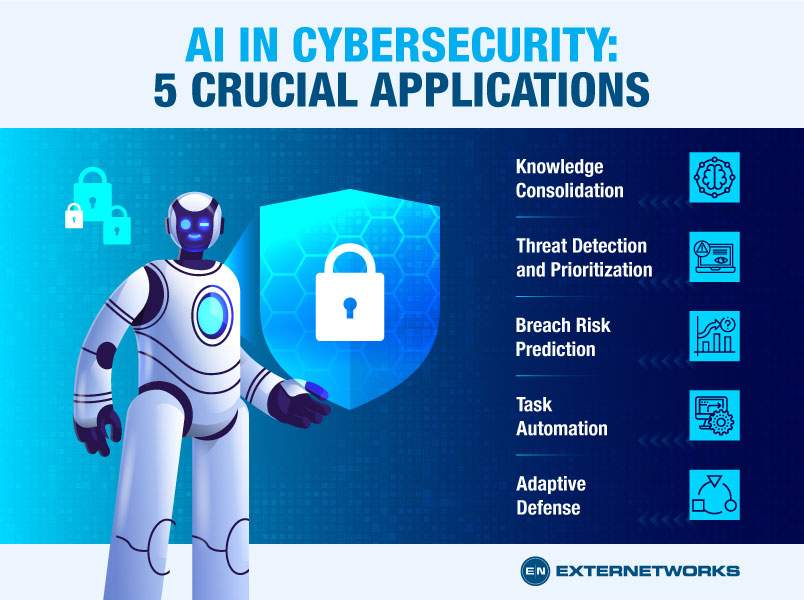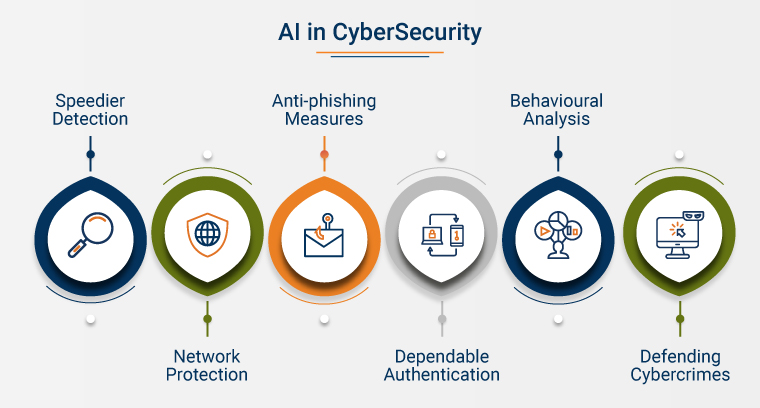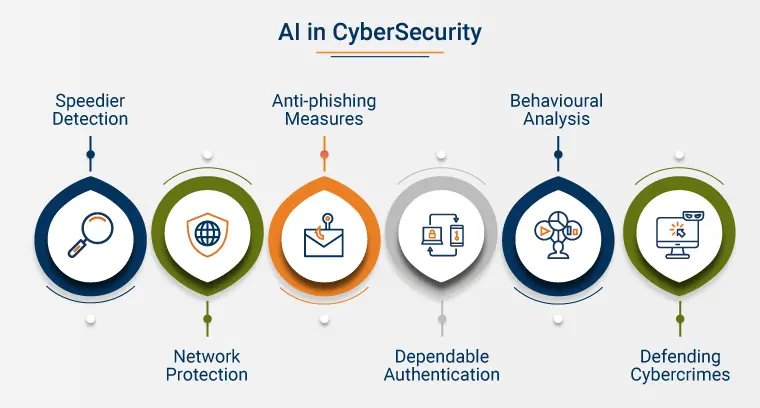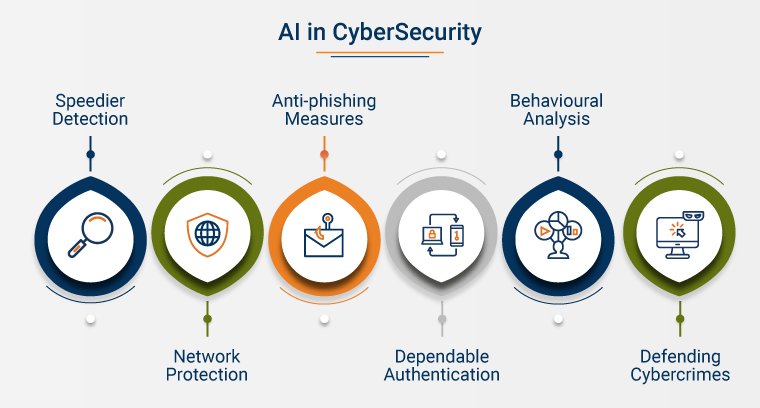
Introduction
Overview of AI in Cybersecurity
Artificial Intelligence (AI) has emerged as a formidable ally in the fight against cyber threats. By leveraging machine learning algorithms, AI systems can analyze vast amounts of data, identify patterns, and predict potential vulnerabilities. For instance, many organizations now employ AI for real-time threat detection, which allows them to respond to incidents much faster than traditional methods.
Importance of Cybersecurity in the Digital Age
In our increasingly connected world, cybersecurity has never been more critical. With the explosion of digital transactions, IoT devices, and remote work environments, organizations face countless threats daily. Here are some key points to consider:
- Cyber attacks can lead to significant financial losses.
- Breaches can damage an organization’s reputation.
- Protecting sensitive data is crucial for maintaining customer trust.
As we navigate this digital era, investing in robust cybersecurity measures, supplemented by AI advancements, is essential for safeguarding our digital footprints and mitigating risk.

Applications of AI in Cybersecurity
Threat Detection and Analysis
One of the most significant applications of AI in cybersecurity is threat detection and analysis. AI systems can sift through massive datasets in real-time, identifying anomalies that may signify a breach. For instance, a financial institution might detect unusual transaction patterns or unauthorized logins, triggering immediate alerts.
Vulnerability Management
Another critical area is vulnerability management. AI can assess an organization’s systems regularly, pinpointing weaknesses before cybercriminals can exploit them. By continuously analyzing software and infrastructure, AI provides:
- Automated scanning capabilities.
- Prioritization of vulnerabilities based on potential impact.
- Recommendations for remediation efforts.
Incident Response
Lastly, AI plays a crucial role in incident response. When a cyberattack occurs, AI-driven systems can help mitigate the damage quickly. For example, they can automate parts of the containment process or provide valuable insights for forensic investigations, allowing teams to focus on strategy and recovery rather than manual data collection. AI’s role in enhancing these applications underlines its importance in a robust cybersecurity framework.

Benefits of AI in Cybersecurity
Enhanced Accuracy and Efficiency
As organizations continue to face complex cyber threats, the integration of AI enhances accuracy and efficiency in cybersecurity practices. Unlike traditional methods that may be prone to human error, AI algorithms can analyze data with precision. For example, by minimizing false positives, security teams can focus their efforts on genuine threats rather than spending time investigating benign anomalies.
Real-time Monitoring and Adaptation
Another significant benefit of AI is its ability to offer real-time monitoring and adaptation. AI systems constantly analyze network traffic and user behavior, allowing them to swiftly detect suspicious activities. This not only improves response times but also enables organizations to adapt their security measures instantly, ensuring robust protection against evolving threats.
Advanced Behavioral Analytics
Finally, AI fosters advanced behavioral analytics, which helps organizations better understand user interactions. By establishing a baseline for normal behavior, AI can identify deviations indicative of potential breaches. This proactive approach empowers security teams to address threats before they escalate, fostering a culture of continuous improvement in cybersecurity strategies. The synergy of these benefits considerably strengthens an organization’s defenses in an ever-shifting digital landscape.

Risks and Challenges of AI in Cybersecurity
Data Privacy Concerns
While the benefits of AI in cybersecurity are significant, it is essential to address the associated risks and challenges. One pressing issue is data privacy. AI systems often require access to large volumes of sensitive data to function effectively. This raises concerns about how data is handled, stored, and shared. Organizations must ensure compliance with regulations, such as GDPR, while balancing effective threat detection.
Potential for Adversarial Attacks
Another risk involves the potential for adversarial attacks. Cybercriminals could manipulate AI algorithms by feeding them misleading data, leading to incorrect threat assessments. For instance, adversaries might create noise in the data, causing systems to overlook real threats.
Dependency on Machine Learning Models
Finally, the dependency on machine learning models presents challenges. If these models become outdated or are not trained on diverse datasets, their effectiveness can diminish. Organizations must continually update and retrain their models to ensure robust performance. Awareness of these risks is crucial as companies integrate AI into their cybersecurity frameworks. Balancing technological advancement with risk management is key to maintaining security in a digital landscape.

Ethical Considerations in AI-driven Cybersecurity
Bias and Fairness Issues
As organizations increasingly rely on AI for cybersecurity, ethical considerations come to the forefront. One major concern is bias and fairness in AI algorithms. If the training datasets used to develop these algorithms are skewed or unrepresentative, AI systems may inadvertently favor certain groups over others, leading to inequitable outcomes. For instance, a security system may flag specific demographics as higher risk, which can perpetuate harmful stereotypes.
Transparency and Accountability
Transparency and accountability are equally important. Organizations must be clear about how their AI systems make decisions. Without transparency, it becomes challenging to assess fairness and address biases. Additionally, companies should establish accountability frameworks to ensure responsible usage of AI technologies. This includes:
- Regular audits of AI algorithms.
- Clearly defined responsibilities for AI deployments.
- Open channels for feedback from users.
By prioritizing these ethical concerns, organizations can foster trust and ensure that their AI-driven cybersecurity measures serve all stakeholders fairly and effectively.

Future Outlook and Trends
Evolution of AI in Cybersecurity
As we look to the future, the evolution of AI in cybersecurity promises exciting advancements. With continuous innovation in AI technologies, we can expect more sophisticated threat detection mechanisms, better predictive analytics, and enhanced automation capabilities. For instance, emerging AI models may teach themselves to recognize novel attacks by analyzing patterns in vast datasets, reducing the response time significantly.
Integration of AI with Human Expertise
Equally important is the integration of AI with human expertise. Instead of viewing AI as a replacement, organizations must see it as a powerful tool to augment their cybersecurity teams. Human analysts bring critical thinking and contextual understanding that AI alone cannot provide. A successful approach will involve:
- Collaborative workflows between AI systems and cybersecurity professionals.
- Continuous training for security teams on AI tools and methodologies.
- Relying on human insights to refine AI outputs.
This synergy will not only strengthen defenses but also foster an environment where technology and human knowledge work hand in hand to combat ever-evolving cyber threats. As these trends unfold, organizations must remain agile and proactive to leverage the full potential of AI in cybersecurity.

Conclusion
Recap of AI’s Impact on Cybersecurity
In summary, AI’s impact on cybersecurity has been profound and transformative. From enhancing threat detection and analysis to automating incident response, AI equips organizations with tools to combat increasingly sophisticated cyber threats. By utilizing advanced behavioral analytics and ensuring real-time monitoring, businesses can proactively address vulnerabilities and secure sensitive data more effectively than ever.
Balancing Benefits and Risk
However, it is crucial for organizations to navigate the accompanying risks and challenges. Issues like data privacy, bias, and the potential for adversarial attacks demand careful consideration as companies adopt AI technologies. Striking a balance between leveraging AI’s benefits while maintaining ethical standards and accountability is vital. By fostering collaboration between AI systems and human expertise, organizations can enhance their cybersecurity posture while addressing concerns head-on. As they forge ahead, being vigilant and adaptable will ensure that they harness AI’s full potential while safeguarding the digital landscape.

